Through the lens of history, the late 1960s are often remembered as a golden era in Formula 1, when the drivers were brave, the tracks punished mistakes, and danger — even death — potentially lurked around every turn.
It was also an era of automotive innovation, and the car that kickstarted it all was the Lotus 49 — the brainchild of Colin Chapman that nestled 1967’s more powerful engines within a pioneering chassis and drivetrain setup.
Victorious in its race debut at the hands of Jim Clark, the Lotus 49 was eventually copied by other teams, effectively setting off the arms race among designers that has continued through modern times.
Along with being a game-changer in Formula 1 racing, that car has been part of sim racing innovation as well. The Lotus was included in Papyrus’ Grand Prix Legends game in the late 90s, which made up for its unpolished graphics with physics that were ahead of its time.
Much of the Papyrus development team eventually formed iRacing, and in 2011, they announced that the Lotus 49 would be laser-scanned and modeled for the sim. Its release was highly anticipated in the first place, but several delays to tune in the then-nascent tire model added even more curiosity — and some consternation — from sim racers.
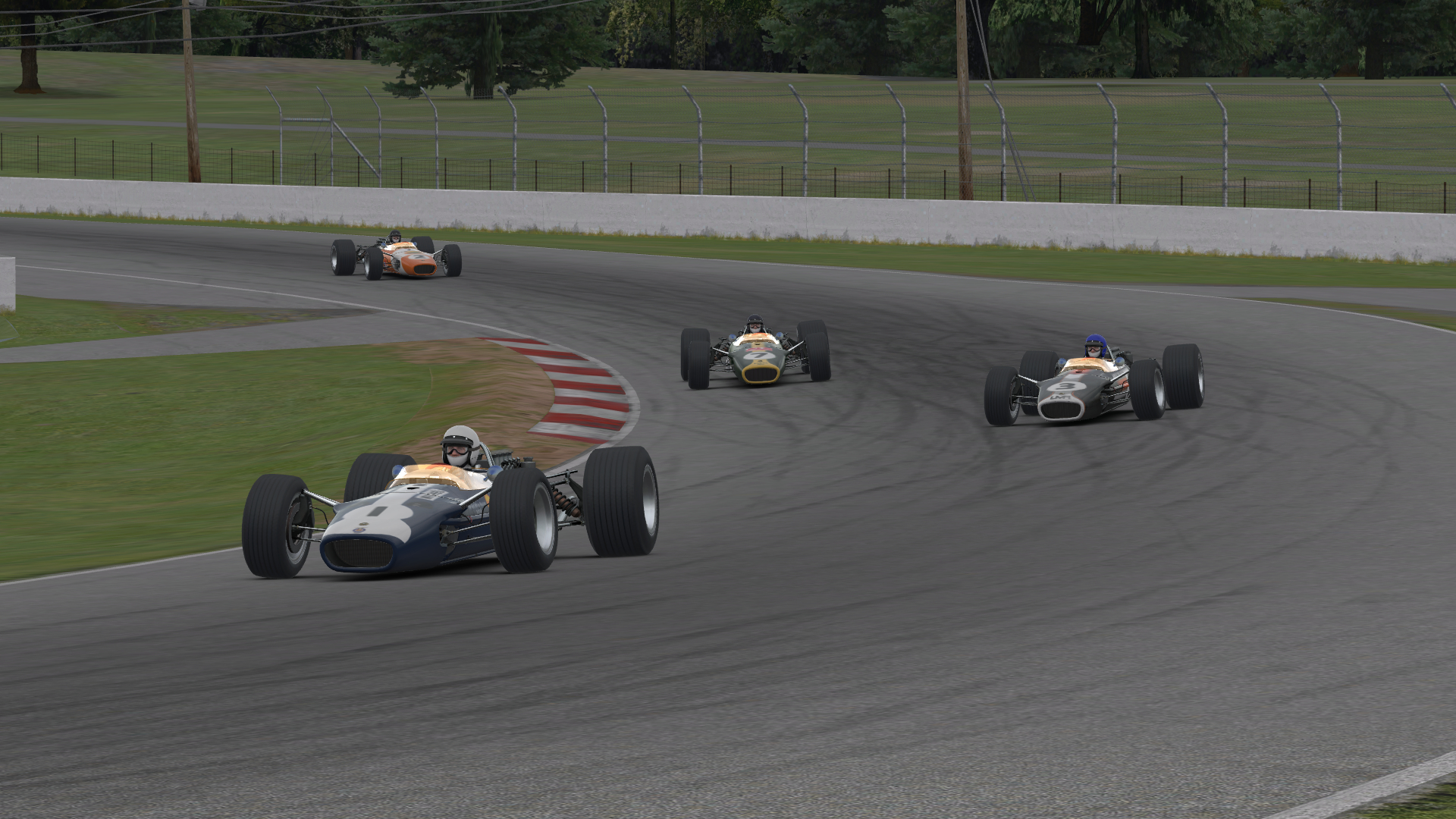
Driving — and drifting — around Mosport.
When the virtual Lotus 49 was finally released in July 2013, it thankfully didn’t mimic the dangers of the real-world car, although it was the first iRacing vehicle to come with a warning. iRacing co-founder Dave Kaemmer penned a tribute that included tips to “restrain the natural impulse to overdrive the car”.
That advice was absolutely necessary, and those who didn’t heed it were doomed to end up in a wall. Okay, let’s face it. Everyone driving the car for the first time probably ended up in a wall anyway. What else would you expect when you couldn’t even reach full throttle on a straightaway without spinning?
But that didn’t stop people, including me, from driving it. Thanks to my conservative driving style and a fast setup shared by a real-world racing pro, I did quite well. In four starts, I collected four top-four finishes, including a win in the first week of racing at Zolder with a nearly 30-second margin over second place.
But until last week, that was the extent of my racing experience in the Lotus 49. It’s not that I didn’t enjoy it. It just required lots of time, effort, and skill, and the lack of those among the masses who once eagerly awaited its debut soon caused its popularity to wane.
Since then, the Lotus 49 series has become one of the least popular on the iRacing road side, but it remains stable thanks to a hearty and well-organized group of drivers. As I flashed back to a car from a half-century ago and a series I last raced four years ago, I wanted to find out how they’re withstanding the test of time.
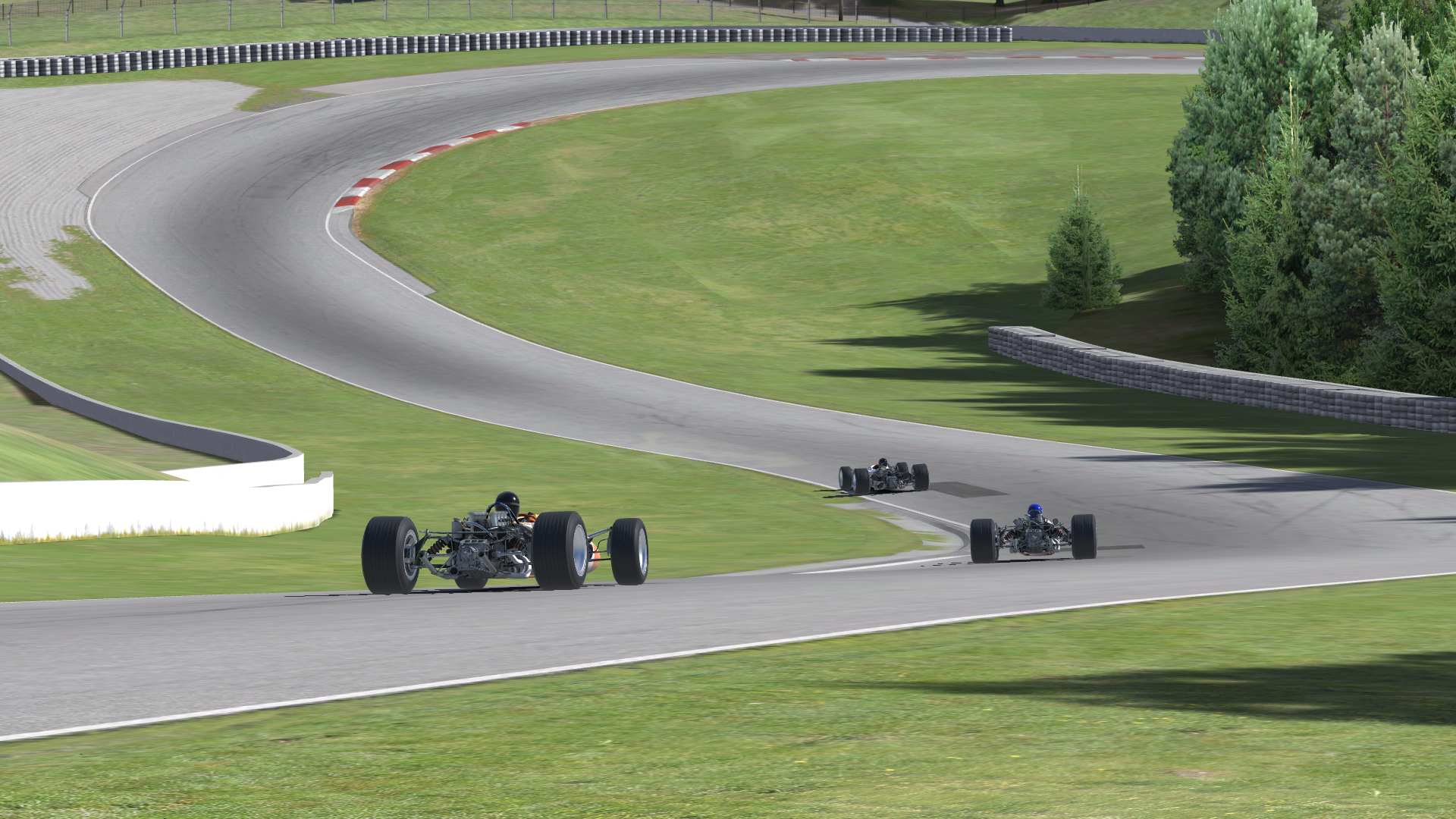
A pack of cars drives through the downhill dip before Moss Corner.
The Shakedown
I began practicing at last week’s circuit, Mosport… er, Canadian Tire Motorsport Park, which is one of the few tracks on the 1967 Formula 1 calendar whose layout has changed little since then.
After firing up the car, I might have immediately crashed into the pit wall. Old habits die hard, I suppose.
Once I managed to make it onto the track, the first real test of the car’s handling would come on the backstretch. How would the car react to a sudden burst of throttle input?
As I understand it, the car’s virtual physics have gone through a few different iterations. On its initial release, it would crash if you even looked at the gas pedal funny. A few seasons later, it was updated to an almost arcade-like mode that long-time drivers complained made it too easy to drive.
I found the current version to be a balance between the two. It was easy to get to full throttle, but over the bumps and crests on the straightaway, the car would get light and loose if I wasn’t careful.
In the braking zones and corners, the car was the same beast I remembered, which I was glad to see. I expect a car with lots of power and little downforce to suit my driving style; that’s why I’ve always enjoyed stock cars on road courses so much.
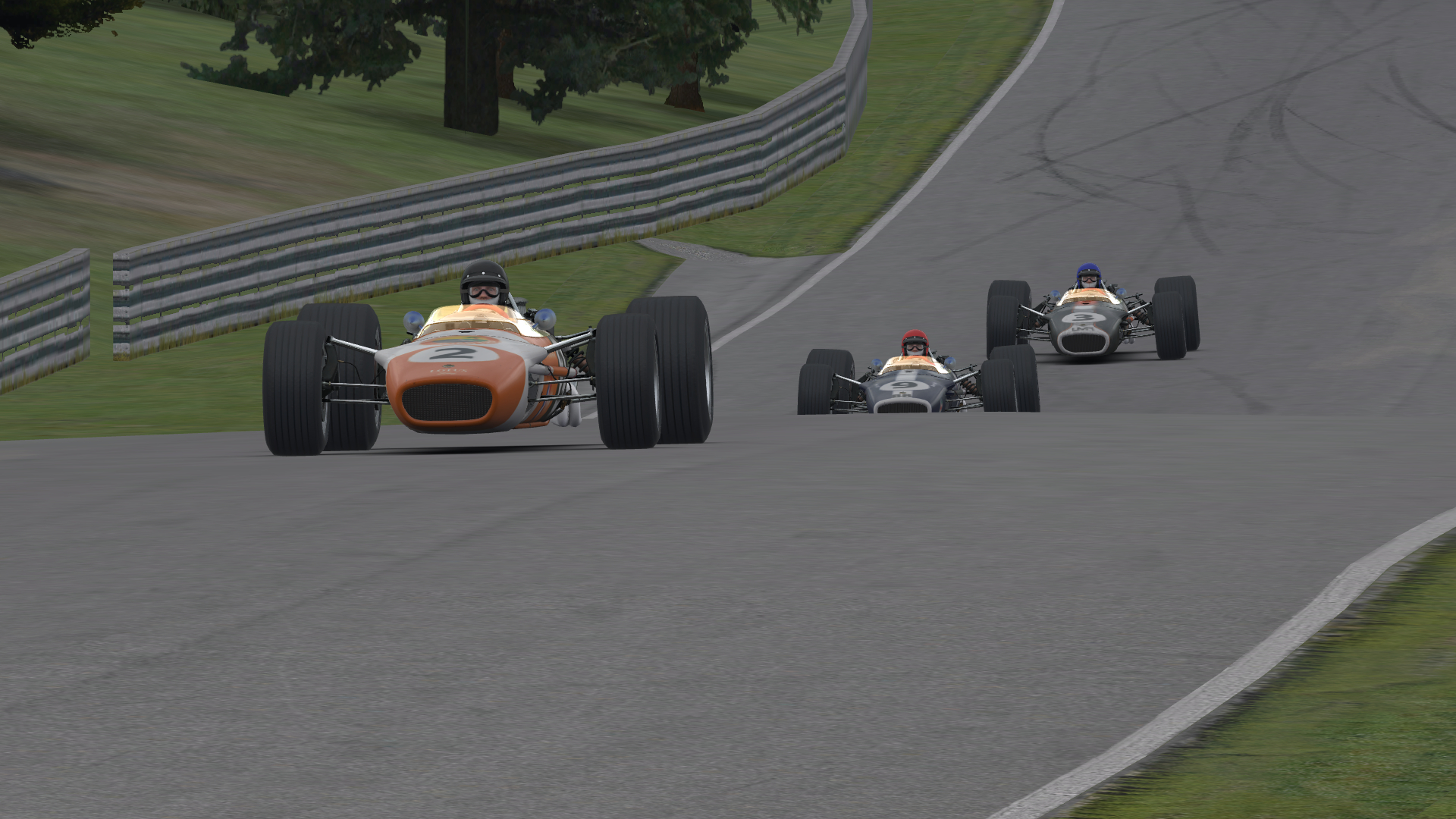
Climbing the precarious crest down the backstretch.
I did notice a key difference between a heavy stock car and the lightweight Lotus, though. Entering a corner, a stock car has pretty much only one response: understeer. What else would you expect from Newton’s first law?
By comparison, the Lotus 49 is much more sensitive, and I found it easy to induce oversteer if I was too heavy on the brakes, too quick on the steering, or too early on the downshift. It’s literally a car with an attitude problem, so it requires correct positioning and smooth inputs entering corners.
I did find that I could sometimes use that troublesome tendency to my advantage. Through the increasing-radius turn 3, for instance, I often used an earlier downshift on entry to get the car to turn. It meant dealing with the back end sliding, but as I realized later in the week, a bit of past racing experience helped me react to that without spinning the car.
With a couple hours of practice in the books, I felt as comfortable as I could driving by myself. I was far from confident about racing, though. Even a small mistake like dropping a tire onto the grass or using too much throttle over a bump could send the car irreversibly into a wall, and I hadn’t had any side-by-side competition with other drivers.
In a car that thrives on consistency, I was about to enter the realm of the unpredictable.
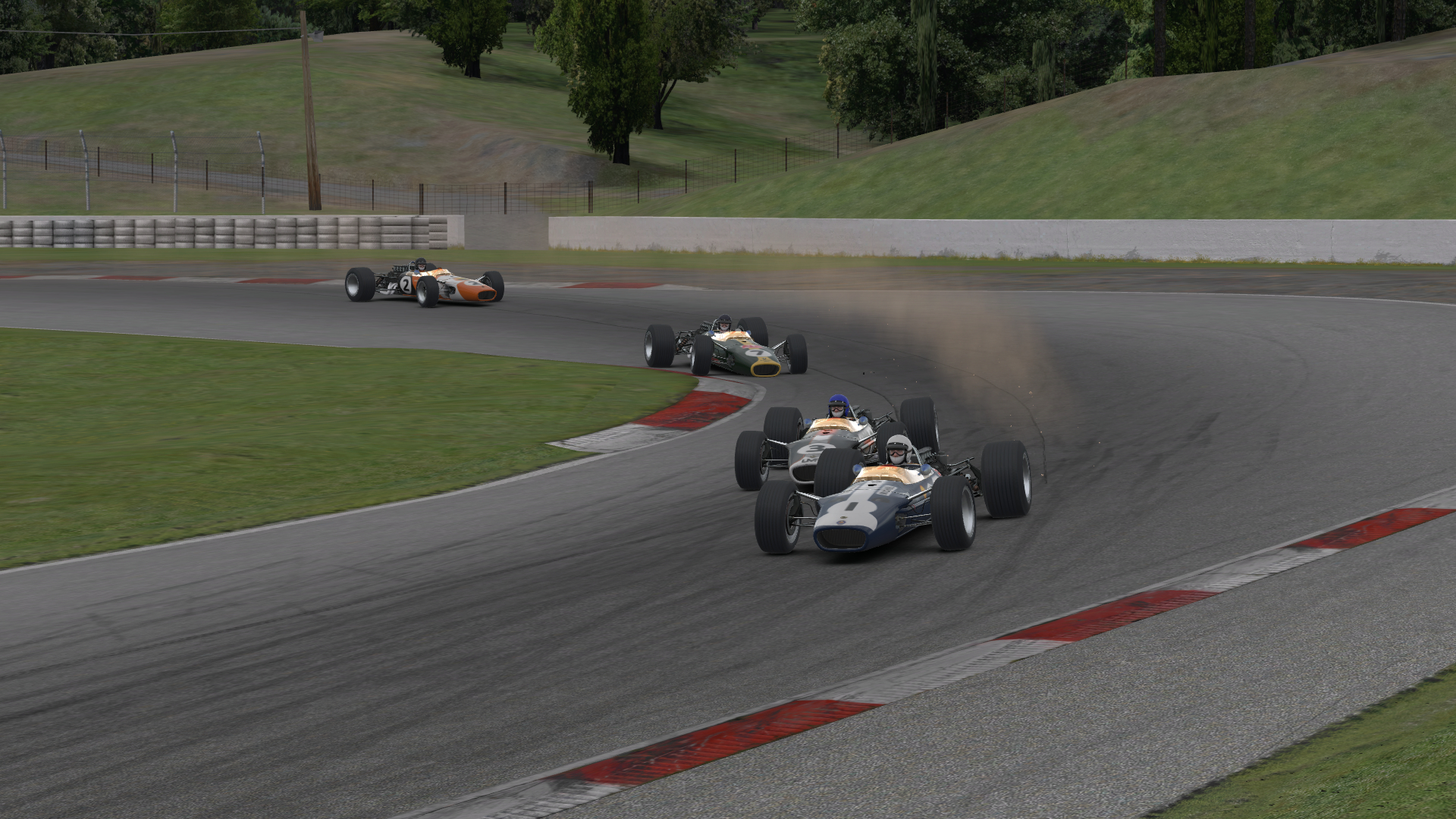
The gravel flies after a trip through Moss Corner.
A Steady Start
The Grand Prix Legends series tends to have up to a half-dozen official races per week, with the most popular timeslot coming on Saturday mornings. The community has made that event a bit like a league, with custom point standings based on the real 1967 rules and a race broadcast to boot.
Racing against drivers who have logged more laps in the Lotus than Jim Clark or any real-world driver ever did, I didn’t expect to be competitive. I just wanted to finish all 28 laps without mistake and perhaps benefit from the same endurance mindset that worked for me in the Pro Mazda earlier this season.
I surprised myself by qualifying in fourth, but one of the toughest parts of the race then awaited. My teammate Karl, who is something of a Lotus 49 veteran himself, cautioned me that the car required more finesse on the standing starts than other open-wheelers like the Skip Barber.
A few practice starts paid off, and when it was time for the real thing, I got off the line smoothly and held my position through the first few corners, still driving cautiously on cold tires.
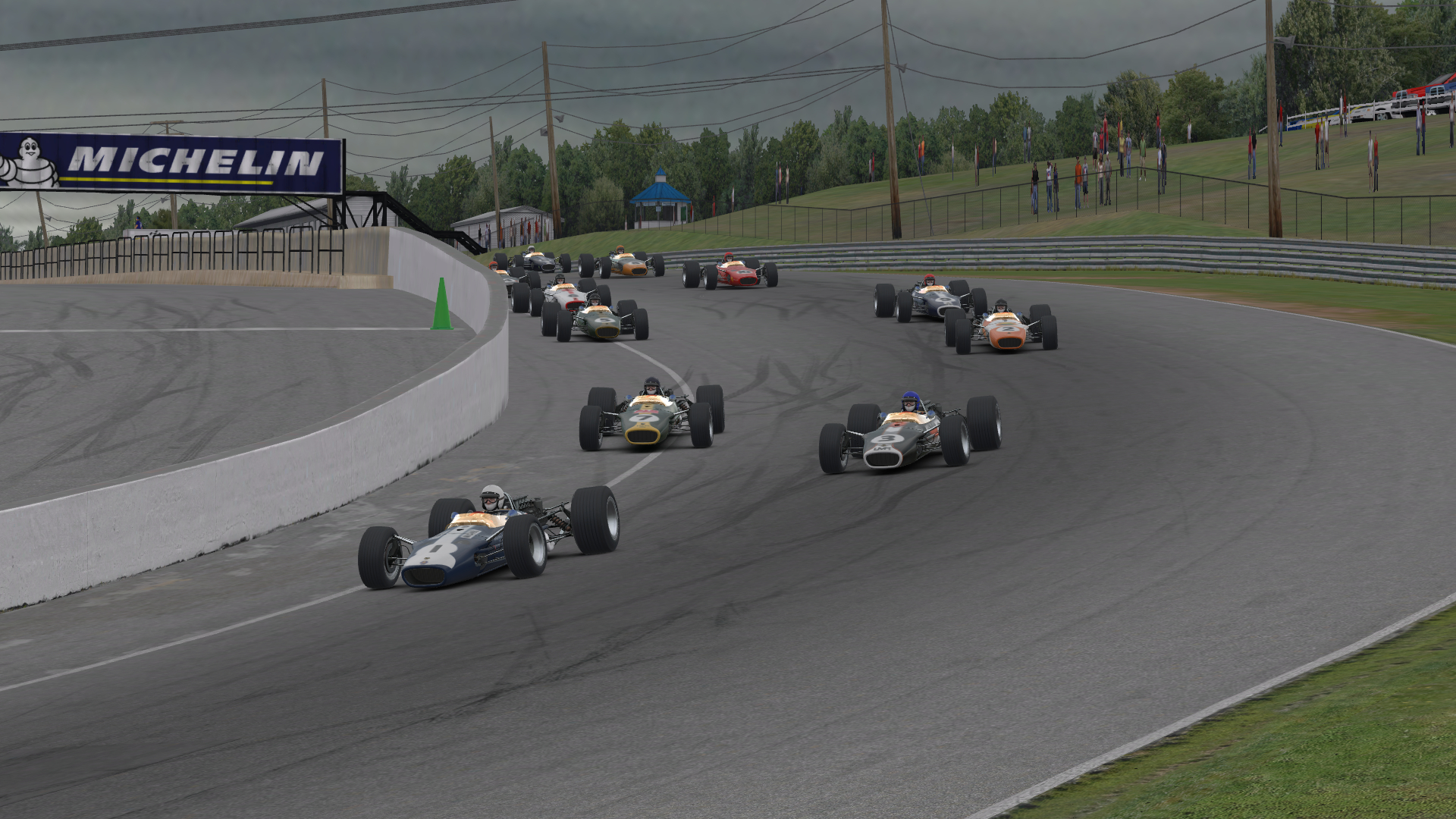
Heading into turn 1 after a successful standing start.
Early on, I was pleased to be keeping up with the top three drivers as they dueled in the draft and went two-wide through the corners. I wasn’t daring enough to challenge for a position like that myself, but as it turns out, I didn’t need to.
On lap 4 exiting turn 1, the third-place car got loose and slammed into the inside wall. The following lap, the race leader overdrove the entry to the tricky turn 2, causing him to slide off into the grass.
After five laps, I was suddenly in second place. Holding it, though, would be a different story. I would have to avoid mistakes — and I clipped the inside grass and nearly botched turn 2 myself a few times — all while facing pressure from the cars just a couple of seconds back.
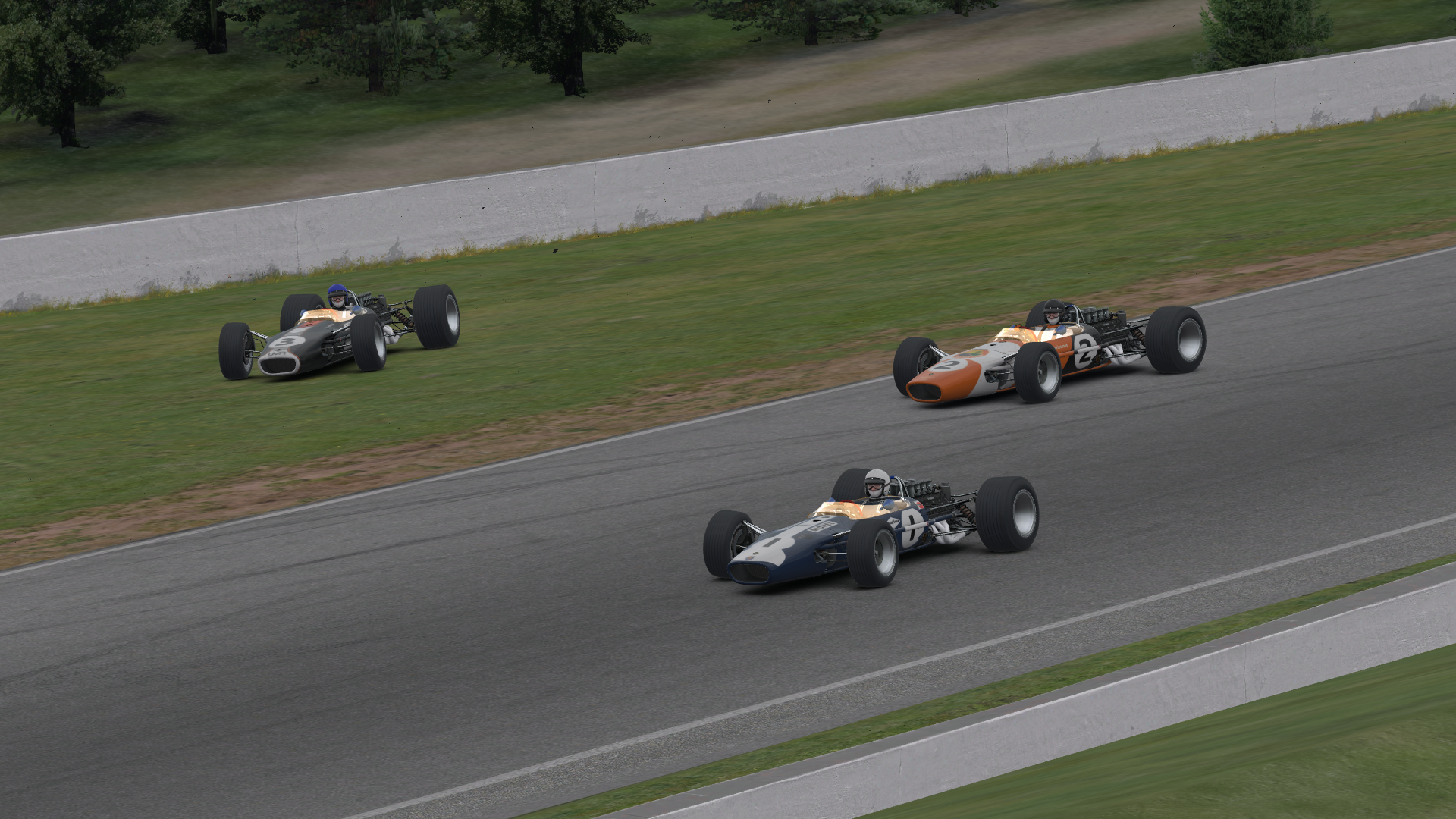
The leader runs wide through turn 2.
A Gentleman’s Game
Again, though, the costliest mistakes ended up coming from my opponents. An off-track excursion by one of the drivers chasing me allowed me to open a larger gap, and he made contact with another car on lap 21, which resulted in one of the stranger exchanges I’ve ever heard on iRacing. Each driver was arguing that they should take the blame for their incident!
One of them insisted he should have braked more, while the other suggested he had been too eager with his pass attempt. It further cemented the league-like feel among this tightly knit series.
I had a similar experience myself. While approaching a lapped car down the backstretch with five laps to go, I drove deep into the braking zone since it appeared he was giving me room on the inside. However, my divebomb was apparently unexpected and we touched wheels mid-corner.
I apologized over the radio, but he sent me a message after the race insisting that it was his fault and that he should have been paying more attention with one of the leaders so close to him.
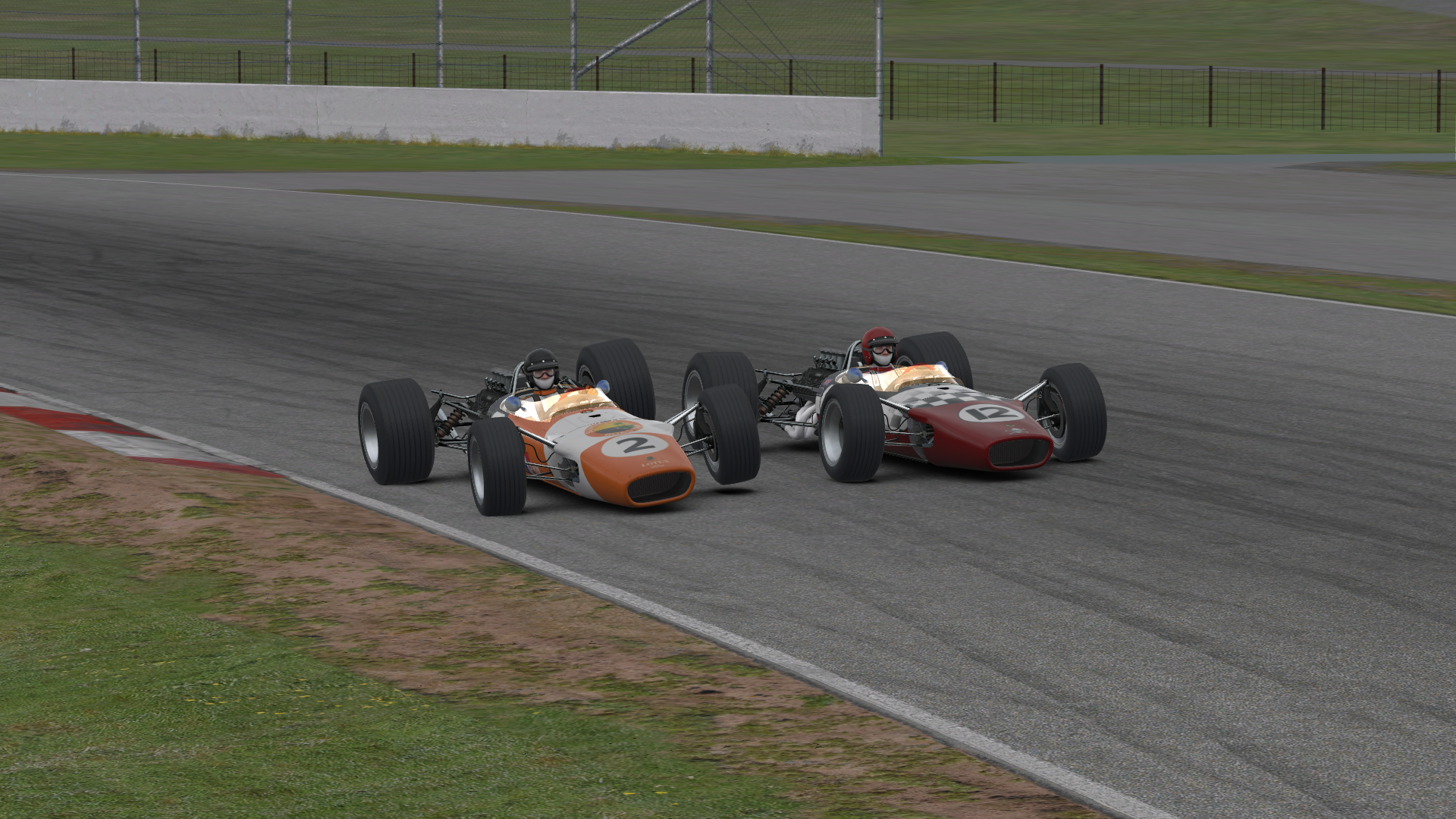
Wheel-to-wheel contact with a lapped car.
In any case, we both made it through the incident undamaged, and I continued on to finish in second place with no spins, crashes, or major incidents to speak of — at least in my own race.
Once again this season, my patience paid off and yielded a strong result. But was it undeserved?
I discovered after the race that some of the top drivers run a heavier fuel load in that timeslot to help level the playing field. While that extreme act of sportsmanship makes me feel like a time machine took me to an alternate reality rather than the 1967 Formula 1 season, it also made me doubt the strength of my result. Should I put an asterisk after it since I was running less fuel?
Upon further reflection, I was proud of my performance because I ran my own race as well and as cleanly as I could. Perhaps the ballast from the extra fuel made my opponents’ cars more unwieldy or put them into riskier positions, but ultimately, those situations were beyond my control. And that’s a good thing — controlling one Lotus 49 is enough work for one driver!
Grand Prix Legends
Saturday, August 26 at 9:30 am EDT • Strength of Field: 2516| Finish | Start | Interval | Laps Led | Fastest Lap | Incidents | Points | iRating | Safety Rating |
|---|---|---|---|---|---|---|---|---|
| 2 | 4 | -12.932 sec. | 0 | 1:15.868 | 6 | 140 | 4643 (+40) | A 3.32 (-0.07) |
A Familiar Feeling
After the race, it occurred to me that I’d seen many characteristics of the Lotus 49 — from the series to the community to the car itself — somewhere before: in the iRacing asphalt sprint car series.
Both have small but enthusiastic followings that are able to support a handful of official races per week. The same sets of challenge-craving drivers tend to frequent those races, fostering that sense of friendly camaraderie.
Furthermore, with both cars being so difficult to control, the brave souls who drive them understand that mistakes will happen, and that they’re racing the car as much as they’re racing one another. That leads to the sense of forgiveness rather than blamelessness when contact does occur.
And while the two cars are from very different disciplines, they even share some driving similarities. Normally, I don’t like a loose car on the road side, but I found myself inducing oversteer in the Lotus to get the car to turn.
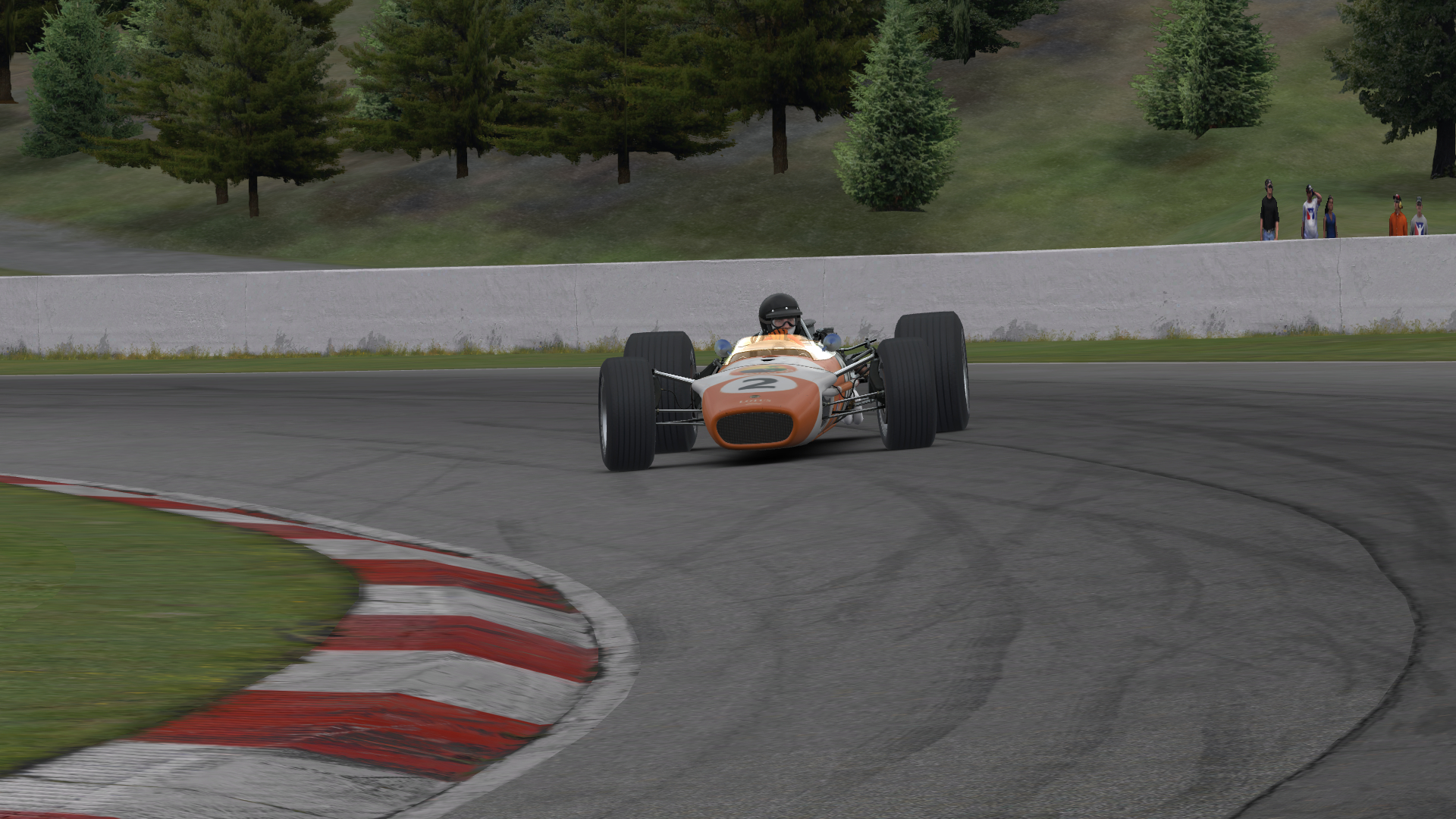
Cranking in the countersteer through turn 3.
After the race, I realized why that felt so comfortable to me: Because I’d dealt with the same feeling in the sprint car. Keeping control when the back end started sliding had become second nature to me, even despite being several seasons removed from driving the sprint car.
With that realization in mind, I had to chuckle when I watched the race broadcast and heard one of the commentators’ remarks about me, an unknown among the Lotus drivers.
“The name looks sort of familiar; I feel like I’ve seen him before,” he said. “He certainly seems to know this car.”
Well, not exactly. But experience in an oval car from decades in the future made me feel right at home in this road racing relic from the past.